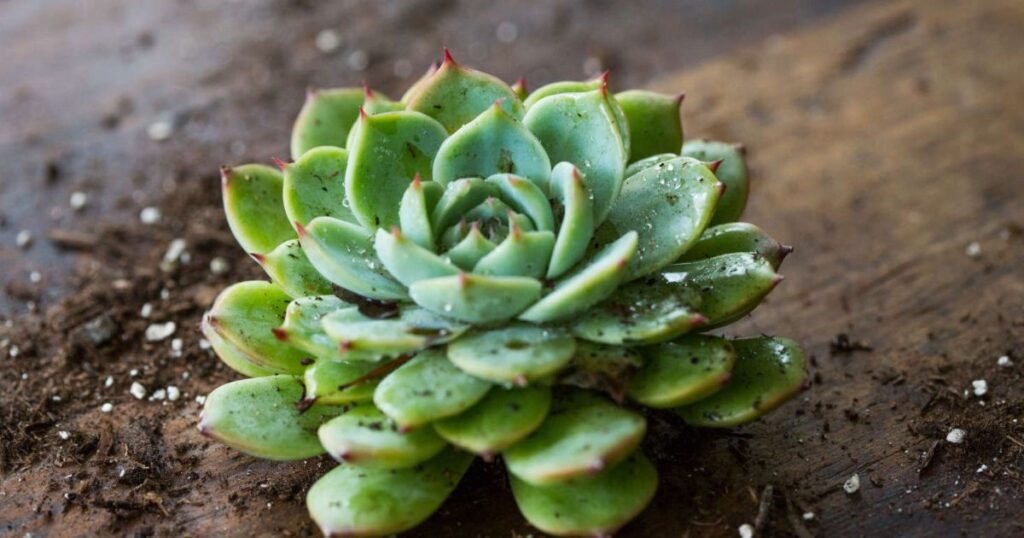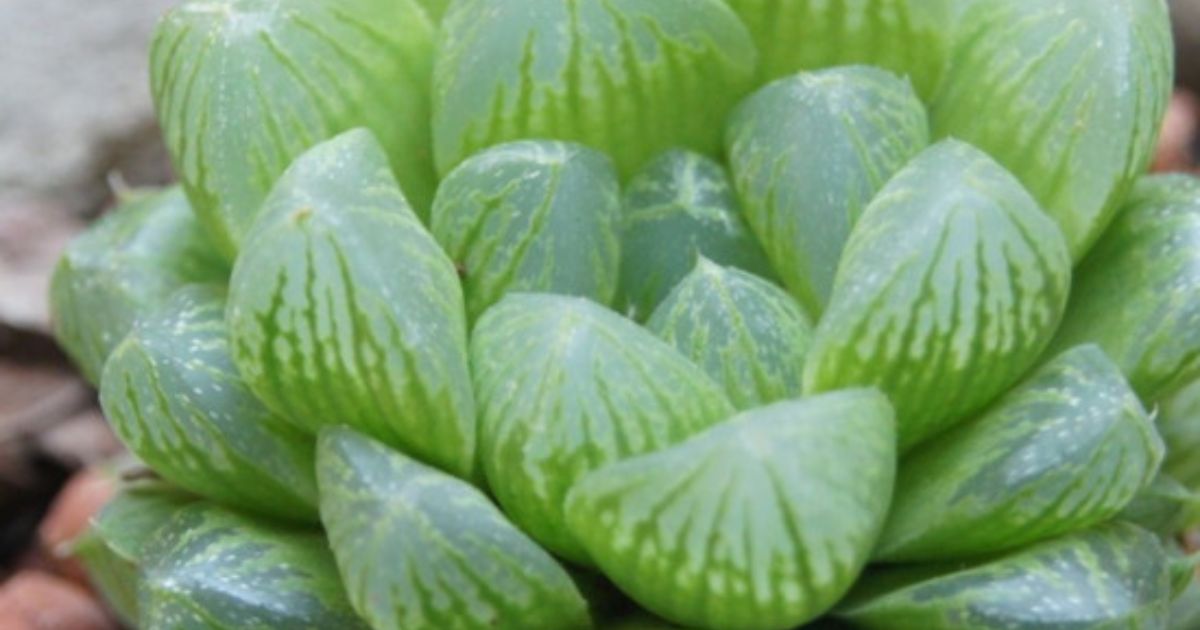A succulent growing tall is typically a sign of insufficient sunlight. Succulents stretch upward to seek more light. This condition is known as etiolation. To prevent it, place your succulent in a sunnier spot.
Curious about your succulent’s unexpected growth spurt Wondering, Why is my succulent growing tall? Discover the answer and learn how to nurture your succulents back to their ideal form. Let’s shed light on this mystery and get your succulents thriving again.
When a succulent is growing tall, it’s a response to inadequate sunlight, a phenomenon known as etiolation. The plant stretches upward in search of more light, causing it to become leggy. To prevent this, provide your succulent with more direct sunlight to encourage compact growth.
Understanding Succulent Growth Patterns
Before diving into the reasons for tall succulent growth, it’s essential to grasp some fundamental aspects of succulent biology.
Succulents and Light Requirements
Light is Life
Succulents are renowned for their ability to store water in their fleshy leaves and stems. However, they also require an adequate amount of light to thrive. Light is crucial for photosynthesis, the process by which plants convert light energy into food. If you notice your succulent turning brown, it may be an indication of insufficient light, which can affect their overall health and appearance.
Different Light Preferences

Different succulent species have varying light requirements. While some succulents prefer full sun, others thrive in partial shade. It’s essential to know your succulent’s specific light needs to provide the right environment.
Why Do Succulents Grow Tall?
Succulents growing tall is often a sign of stress or a less-than-ideal growing environment. Let’s explore the common reasons behind this phenomenon.
Etiolation – The Stretching Syndrome
The most prevalent reason for succulents growing tall is inadequate light. When succulents don’t receive enough light, they exhibit a behavior known as etiolation. Etiolation causes the plant to stretch and elongate as it searches for more light. This results in a leggy appearance with stretched-out stems and leaves.
Solution
To combat etiolation, place your succulent in a location where it can receive more direct sunlight. Ensure it gets at least 6 hours of bright, indirect sunlight daily. South-facing windows are generally ideal for many succulent species.
Overwatering
Overwatering is a common issue in plant care, including succulents, and it occurs when a plant receives more water than it can effectively use or drain.
| Topic | Causes of Tall Succulent Growth | Preventive Measures |
| Light Requirements | Inadequate sunlight (Etiolation) | Determine specific light needs |
| Position in the right location | ||
| Watering Practices | Overwatering | Water wisely (soak and dry) |
| Use well-draining soil | ||
| Proper Care | Neglecting basic care practices | Repot when necessary |
| Fertilize during the growing season | ||
| Crowded or Shaded | Competition for light | Repot into a more spacious container |
| Conditions | ||
| Pruning and Training | Pruning leggy growth | Regularly pinch or prune tips |
| Training for shape | ||
| Addressing Root Issues | Root damage or rot | Regularly check root health |
| Repot into fresh soil, remove damaged roots |
Solution
Water your succulent sparingly, allowing the soil to dry out between waterings. Always ensure that the pot has proper drainage to prevent water from pooling at the bottom.
Ignoring Basic Care
Neglecting essential care practices can contribute to tall succulent growth. This includes not repotting when necessary, using the wrong type of soil, or failing to provide adequate nutrients.
Solution
Regularly inspect your succulent for signs that it needs repotting. Use a well-draining cactus or succulent soil mix, and consider fertilizing during the growing season (spring and summer) to provide the necessary nutrients.
Crowded or Shaded Conditions
Crowded or shaded conditions can lead to tall succulent growth. When succulents are placed in areas with limited space or compete with other plants for light, they tend to stretch and elongate, seeking more light. This results in leggy growth as the succulent strains reach the available sunlight. To prevent this, consider repotting overcrowded succulents into larger containers or relocating them to areas with better light conditions. Proper spacing and adequate sunlight will help maintain a more compact and healthy growth pattern for your succulents.
Competition for Light
If your succulent is in a crowded container with other plants or is situated in a location with limited space, it may stretch in search of light. The competition for light can cause the succulent to grow tall and spindly.
Solution
Repot your succulent into a more spacious container if it’s overcrowded. If it’s in a garden bed, consider relocating it to an area with better light conditions.
How to Prevent Tall Succulent Growth
Now that we’ve identified the reasons behind tall succulent growth, let’s explore how to prevent and rectify this issue.
Determine Light Requirements
First, understand the specific light needs of your succulent species. Some thrive in bright, direct sunlight, while others do well in filtered or partial shade.
Placement Matters
Position your succulent in the right location to meet its light requirements. South-facing windows are generally ideal, but east or west-facing windows can also work. If growing outdoors, ensure the succulent is not overshadowed by taller plants.
Proper Watering Practices
Proper watering practices for succulents involve allowing the soil to dry out between waterings. Succulents prefer a “soak and dry” approach, where you thoroughly water the plant, ensuring water reaches the root zone, and then allow the soil to dry before watering again.
Use Well-Draining Soil
Ensure your succulent is potted in well-draining soil to prevent water from accumulating in the root zone. You can add sand or perlite to regular potting soil to improve drainage.
Repot When Necessary
Keep an eye on the growth of your succulent. If it becomes crowded, root-bound, or outgrows its container, it’s time to repot. Choose a slightly larger pot with drainage holes.
Fertilize Appropriately
During the growing season (spring and summer), consider feeding your succulent with a diluted, balanced liquid fertilizer to provide essential nutrients.
Pruning Leggy Growth
If your succulent has already grown tall and leggy, you can prune it to encourage a more compact shape. Use clean, sharp scissors or pruning shears to trim the stretched-out stems.
Training for Shape
Some succulent varieties can be trained to grow in a more compact form by regularly pinching or pruning the tips.
Root Health
Regularly check the health of your succulent’s roots. If they appear waterlogged, rotting, or damaged, consider repotting the plant into fresh soil. Remove any affected roots before replanting.
FAQ’S
What do I do if my succulent is too tall?
If your succulent has grown too tall and appears leggy, there are several steps you can take to address the issue
Is it OK for succulents to grow tall?
Succulents growing tall, a condition known as etiolation, is generally not ideal. Etiolation is a sign that the succulent is stretching to seek more light, resulting in a leggy appearance with elongated stems and leaves.”
How do I keep my succulents small?
Place your succulents in a location with slightly less sunlight than they prefer. This will slow down their growth and encourage a more compact form.
How do you increase succulent size?
Increasing the size of your succulent can be achieved through several methods.
Conclusion
Understanding why your succulent is growing tall is the first step in addressing this issue. Whether it’s due to insufficient light, overwatering, neglect of basic care, or crowded conditions, there are practical solutions to rectify the problem and encourage healthy, compact growth.
By providing the right light, maintaining proper watering practices, regular maintenance, and addressing any root issues, you can ensure your succulent remains a stunning and vibrant addition to your home or garden. With the right care and attention, you can enjoy your succulents at their best for years to come.
Understanding the factors behind your succulent’s tall growth is crucial to its overall health and aesthetics. Whether it’s the consequence of insufficient light, overwatering, neglect of basic care, or crowded conditions, the solutions are within reach. By providing the right amount of light, practicing proper watering, ensuring regular maintenance, and addressing root issues when necessary you can guide your succulent towards a more compact and appealing form.










